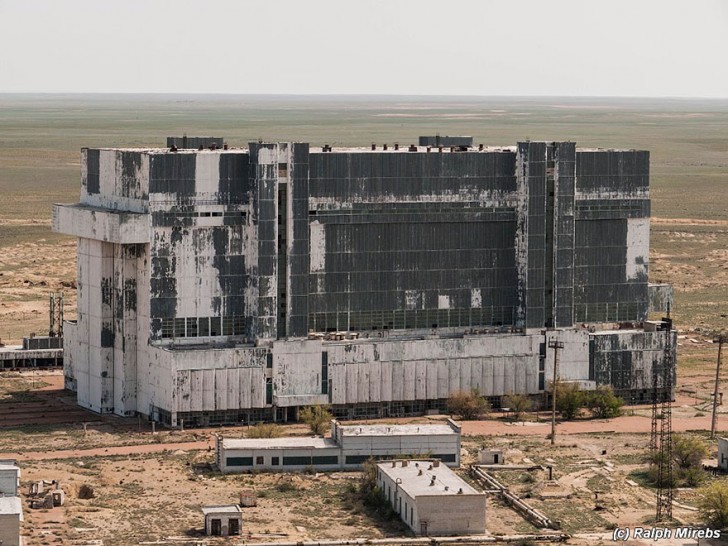

The remaining two are abandoned to this day in a hangar called “MZK,” which stands for “Assembly and Fueling Building.” One of them, nicknamed Ptichka (“Birdie”), was supposed to fly the second Buran mission, and it was more than 90 percent ready when the Buran project was canceled, according to Hendrickx.
BURAN SHUTTLE ABANDONED FULL
One, a full scale test model, was left to rust outdoors, but in 2007 it was moved to the nearby Baikonur museum where it still stands as an exhibit. Three more Burans were kept at the complex. The vehicle used for the first flight, whose actual name was “Buran,” was put into storage in a building at the Baikonur spaceport, but due to neglect and the extreme temperature variations of the Kazakh steppe, the roof collapsed in 2002 and completely destroyed it. SVF2/Universal Images Group Editorial/UIG via Getty Images The Buran on the Baikonur launch pad in November 1988. There was no fundamental need for it in the immediate future of the Soviet space program,” said Hendrickx. Shortly after that mission, the program was suspended and president Boris Yeltsin eventually canceled it on June 30 1993: “After the collapse of the Soviet Union, there simply was no money left to use it for the civilian missions that it could still have performed, mainly space station support. 15 1988, just a year before the fall of the Berlin wall. The Buran’s lone flight was completed successfully on Nov. Hendrickx agrees: “In the end, the Russians developed a system that was more capable, more versatile and safer than the space shuttle, but by the time it was ready to fly, the Cold War was coming to an end and the project had lost much of its political support,” he said. Oleg Kotov, a veteran Russian cosmonaut who’s spent more than 500 days in space, said in 2011 that these details could have made the Buran safer.
BURAN SHUTTLE ABANDONED FREE
The Buran also had emergency ejects seats for all crew members (absent on the US shuttles) and was free from the specific design flaws that contributed to the destruction of two shuttles in flight, the Challenger in 1986 and the Columbia in 2003. The last resort: Inside the USSR's futuristic sanatoriums The New York Times wrote: “Even the paint job, white with black trim, is much the same.”

Many Russian engineers say that the laws of aerodynamics left little room for other designs, but that’s hard to defend.” When the Buran was finally unveiled, in 1988, the similarities hitherto hidden by the shroud of secrecy of the Cold War became apparent. No doubt, that time was spent also studying NASA’s designs: “There was an urge in the Soviet defense industry to blindly copy whatever the Americans built. The first shuttle, Enterprise, had been completed for four years when the Soviets started building the inaugural Buran in 1980. To them it was just another part of the arms race,” said Hendrickx. If the Americans hadn’t developed the shuttle, the Russians wouldn’t have developed Buran. The USSR wanted a clone with the same ability: “The decision to build Buran was a response to the perceived military threat posed by the space shuttle. NASA’s shuttle was basically a space truck, designed to haul large cargo into orbit at the request of the Pentagon, which planned to use it to deploy military satellites. That’s no coincidence: “The Russians needed a vehicle of similar dimensions because they wanted to match the payload capacity of the space shuttle,” said Soviet space historian Bart Hendrickx in an email interview. The design of the Buran (“blizzard” in Russian) was remarkably similar to that of the US shuttle. The revolutionary design of communist currencies This place is unreal,” he said in an email interview.

Getting there was an epic adventure, we didn’t know if we would make it because the Kazakh steppe is a hostile environment. The site is not open to the public, but a few adventurers have mustered the courage to sneak in and take a look.Īmong them is French photographer David de Rueda, who visited the site three times between 20: “The space shuttles are only a few hundred meters from active facilities. It’s an active spaceport about 1,500 miles southeast of Moscow, still used today to send and retrieve astronauts from the International Space Station. Two shuttles and a rocket lie in disused hangars, not far from the launchpad of that first flight, at the Baikonur Cosmodrome. Now, the ruins of what was called the Buran program are left to rust in the steppe of Kazakhstan. But after just one flight, it was mothballed. It was the Soviet response to the space shuttle, designed to take the Cold War into space.


 0 kommentar(er)
0 kommentar(er)
